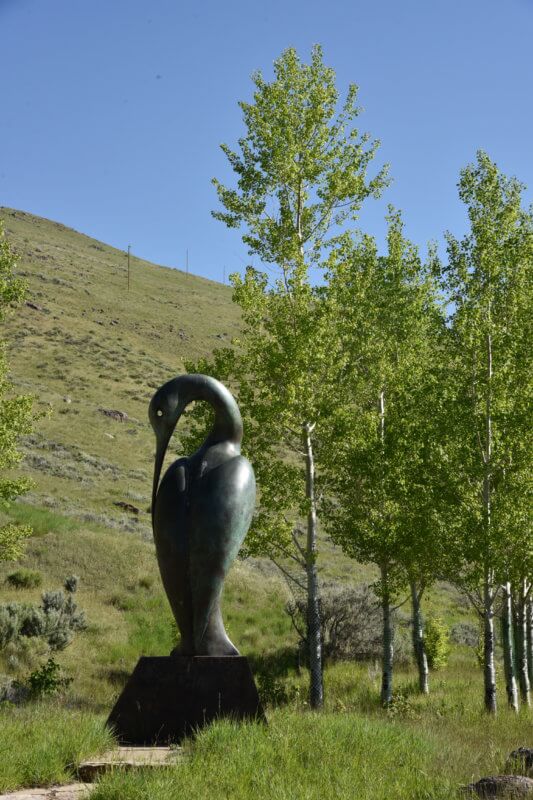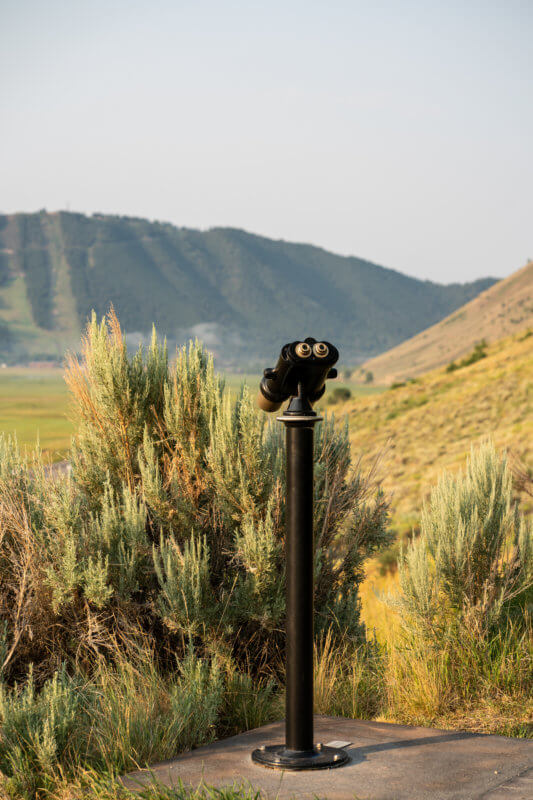Greater Yellowstone Botanical Tour
The Greater Yellowstone Botanical Tour, or GYBT, is a long-term initiative that activates the Sculpture Trail and the outdoor spaces of the Museum. In collaboration with Teton Botanical Garden and the Nature Conservancy of Wyoming, thousands of new plantings have been rooted along the Sculpture Trail, emphasizing native plants and regional ecosystems. A Museum app tour, available in both English and Spanish, engages visitors with artwork from the Museum’s permanent collection and three local biomes: the Sagebrush Steppe, the Wildflower Meadow, and the Aspen Grove. The app tour officially opened on July 9th, 2022.

Plants that are native to an area have grown there naturally, over many years, without human intervention. The Greater Yellowstone Ecosystem, of which Jackson is a part, is one of the largest intact ecosystems on earth. It is home to over 1,000 native plants that are linked to the survival of countless species, including humans. Follow the Sculpture Trail to visit three unique habitat types in this ecosystem and to learn about dozens of native plants, from colorful wildflowers to rustling trees. The Botanical Tour supports the vision of Walter J. Hood, the award-winning landscape architect who designed the Museum’s Sculpture Trail. Hood’s vision uses natural contours of the landscape and native plants to create a profound interface between nature and art. Let the diversity of the surrounding flora inspire you as it has inspired artists throughout the centuries. Consider nurturing native plants where you live—they are beautiful, easy to care for, and vital to supporting the wildlife with whom we share a home.
- 1
Wildflower Meadow
The diversity of wildflowers in the Greater Yellowstone Ecosystem is incredible. From the showy arrowleaf balsamroot to the tiny sagebrush buttercup, each one provides a life-giving buffet of nectar and pollen for bees, butterflies, moths, ants, and hummingbirds, as well as seeds that nourish birds and small mammals.
- 1
Aspen Grove
Did you know that a stand of aspens in our neighboring state, Utah, is the world’s largest organism by mass? What appears to be a single aspen tree is actually part of a larger, interconnected being. Aspens clone themselves to create vast forests, but each grove is considered one organism. Aspens provide critical food for all members of the deer family, including elk and moose, nesting sites for birds, and shade for other plants.
- 1
Sagebrush Steppe
Sagebrush is an icon of the American West, its scent widely admired. The sagebrush steppe habitat is full of shrubs, most of which are sage, and dotted with hundreds of species of wildflowers and grasses. Many animals depend on this ecosystem for year-round food and shelter, including elk, mule deer, pronghorn, the greater sage-grouse, and Wyoming’s state bird, the western meadowlark.
The GYBT can be a powerful educational tool to engage visitors in nature and in place. It will allow the Museum to provide visitors with a deeper understanding of regional ecosystems, through exploration, through education, and through art.
Educational activation of the GYBT allows the Museum to…
- Connect indoor and outdoor learning spaces, giving visitors transferable learning skills that can be practiced in any location.
- Emphasize the importance of ecosystems and how plants, animals, and land are in relationship to each other.
- Facilitate learning about the less visible processes of plants that have profound impacts on wildlife and human survival.
Educational programming that centers native plants and botanical processes both supports and expands the Museum’s mission because…
- Our understanding of wildlife and the art in our collection can broaden with a deeper understanding of plants and their relationships to animals.
- Stewardship of wildlife is most successful when the entire ecosystem of animals, plants, and land is cared for.
The Greater Yellowstone Botanical Tour on the Museum’s Sculpture Trail is a partnership of NMWA, The Nature Conservancy of Wyoming, and Teton Botanical Garden, made possible by Teton Conservation District. Additional support provided by: Community Foundation of Jackson Hole, Jackson Hole Land Trust, Lea Charitable Trust, Northern Rockies Conservation Cooperative, Teton County Weed and Pest, and The Smart Family Fund.


